Easily Detect Plagiarism in Microsoft Word: A Step-by-Step Guide

When you steal writing content from another, it’s call plagiarism and we’ll show you how to detect plagiarism in Microsoft Word.
Students and lazy coworkers often want to find the fastest way to write a report or presentation document. When taking content from another person, it’s called plagiarism, and it happens more frequently than you may think.
Are you a teacher or professor who suspects plagiarism from students who turn in a paper? Or, are you an editor or business leader who wants to ensure an important document isn’t a simple copy-and-paste job from a website?
Plagiarism is a significant issue in academia and the business world. Microsoft’s word-processing app has many features you can utilize. For example, you can manage text predictions in Word and more.
We have shown you how to detect plagiarism in Google Docs, and in this guide, we’ll show you how to do it in Microsoft Word.
Stop Content Thieves and Check Plagiarism in Word Docs
If you want to check for plagiarism in a Word document, the process is easier than you think. In fact, it works the same whether you’re running Word on Windows or macOS. Once you load the document into Word, follow these steps.
- Click the Review tab on the ribbon.

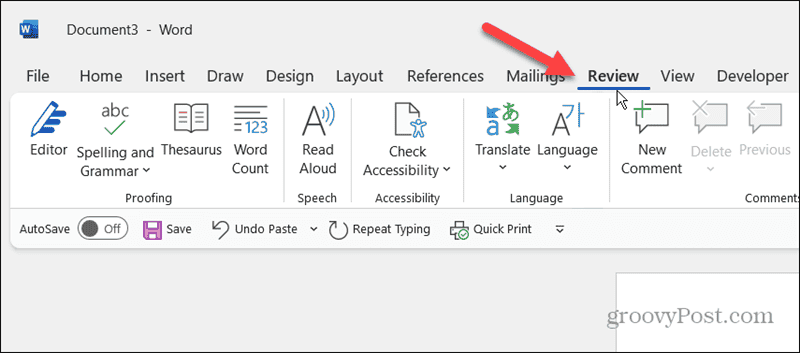
- Click the Editor button on the left side of the ribbon.

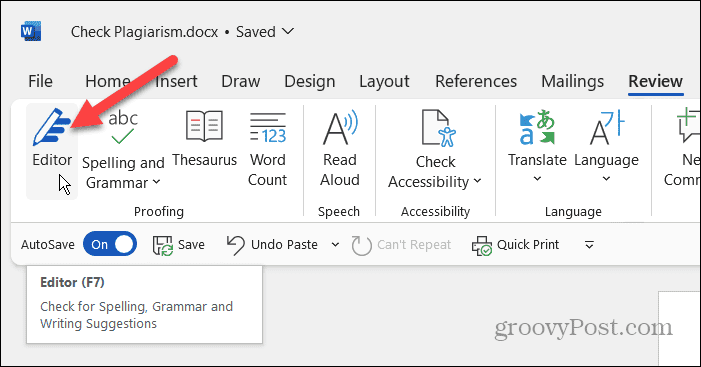
- A sidebar with editorial options will open on the right side of the document.
- Scroll down the left panel and click the Check for similarity to online sources button under the Similarity section.

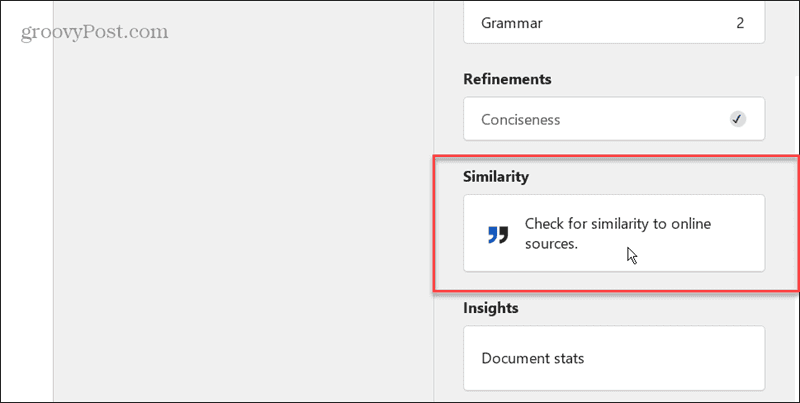
- The plagiarism checking for the document will be initiated (powered by Bing). Note that, depending on the length of the document, this process can take a while to complete.
- The results will be displayed when they are complete. For instance, our document shows that 15% of the information is similar to online sources.

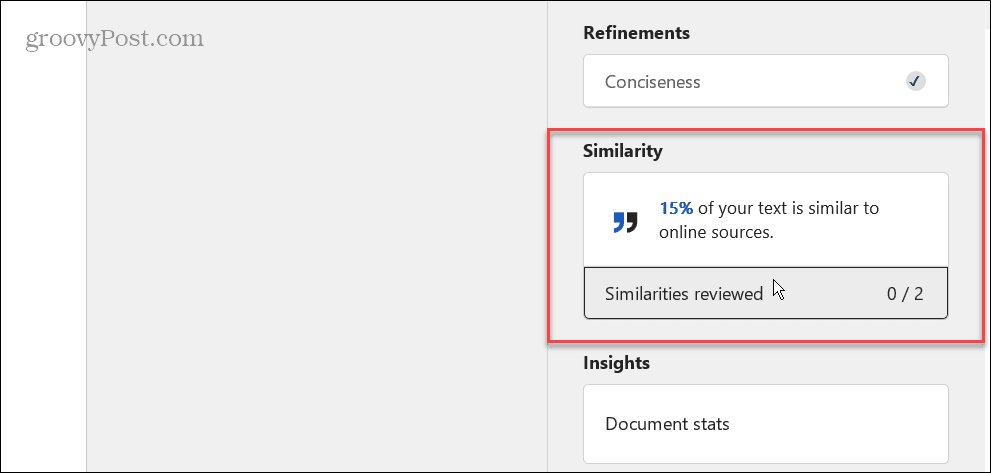
- The questionable portions of the text will be highlighted in the document. Selecting the text will give you more information, such as where the content came from.

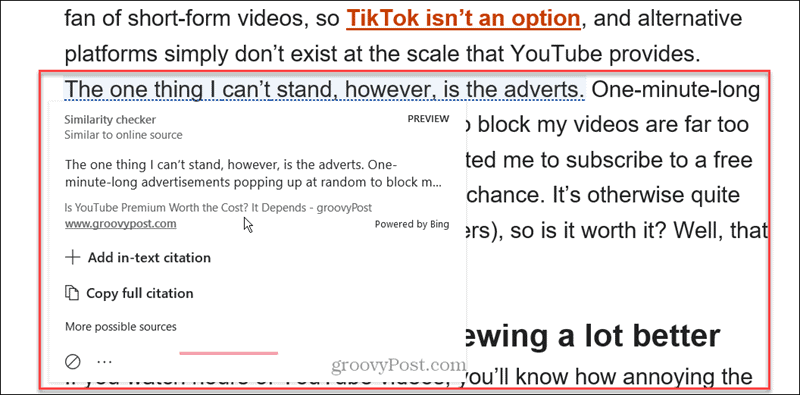
That’s all there is to it. Once you have details on specific text in the document, you can click the link to the online article to view the source where the content was lifted.
It’s also important to mention that you can detect plagiarism on both the desktop and web versions of Word by signing in with your Microsoft account.
Stop Plagiarists in Their Tracks for Free Using Word
If you suspect a document was lifted from a published online source, you can verify it with a few clicks. Of course, you may find some text on websites since we all research online. Luckily, you can use the similarity text links to go directly to the source to see if it’s a copy-and-paste job. You can also use it to cite quotations so the original author gets the credit.
1 Comment
Leave a Reply
Leave a Reply


















ESM
July 8, 2024 at 10:32 am
It doesn’t appear Similarity option in the left panel.